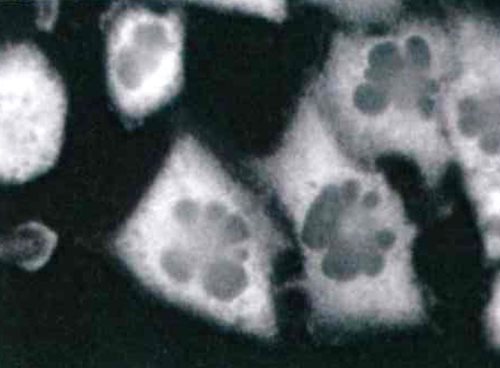Sars-CoV-2 Nucleocapsid Protein (His Tag)
Shipping Info:
For estimated delivery dates, please contact us at [email protected]
| Amount : | 100 µg |
| Purification : | >=95% (SDS-PAGE) |
| Content : | Lyophilized. Concentration: 1mg/ml after reconstitution. Reconstitution: Reconstitute with 100µl endotoxin-free water. |
| Storage condition : | Short Term Storage +4°C; Long Term Storage -20°C; Handling Advice After opening, prepare aliquots and store at -20°C. Avoid freeze/thaw cycles.For maximum product recovery after thawing, centrifuge the vial before opening the cap. |
| AA sequence : | SARS-CoV-2 Nucleocapsid protein (aa 1-419) is fused at the N-terminus to a His-tag. |
| Alternative Name : | 2019-nCoV N Protein |
Source: E. coli. SARS-CoV-2 shares 79.5% sequence identity with SARS-CoV and is 96.2% identical at the genome level to the bat coronavirus BatCoV RaTG133, suggesting it had originated in bats. The coronaviral genome encodes four major structural proteins: the Spike (S) protein, Nucleocapsid (N) protein, Membrane/Matrix (M) protein and the Envelope (E) protein. The SARS Envelope (E) protein contains a short palindromic transmembrane helical hairpin that seems to deform lipid bilayers, which may explain its role in viral budding and virion envelope morphogenesis. The SARS Membrane/Matrix (M) protein is one of the major structural viral proteins. It is an integral membrane protein involved in the budding of the viral particles and interacts with SARS Spike (S) protein and the Nucleocapsid (N) protein. The CoV Spike (S) protein assembles as trimer and plays the most important role in viral attachment, fusion and entry. It is composed of a short intracellular tail, a transmembrane anchor and a large ectodomain that consists of a receptor binding S1 subunit (RBD domain) and a membrane-fusing S2 subunit. Sequence analysis of the SARS-CoV-2 S protein genome showed that it was only 75% identical with the SARS-CoV S protein. However, analysis of the receptor binding motif (RBM) in the S protein showed that most of the amino acid residues essential for receptor binding were conserved between SARS-CoV and SARS-CoV-2, suggesting that the 2 CoV strains use the same host receptor for cell entry, the receptor angiotensin-converting enzyme 2 (ACE2). The N protein contains two domains, both of them bind the virus RNA genome via different mechanisms.
|
There are currently no product reviews
|






















.png)








